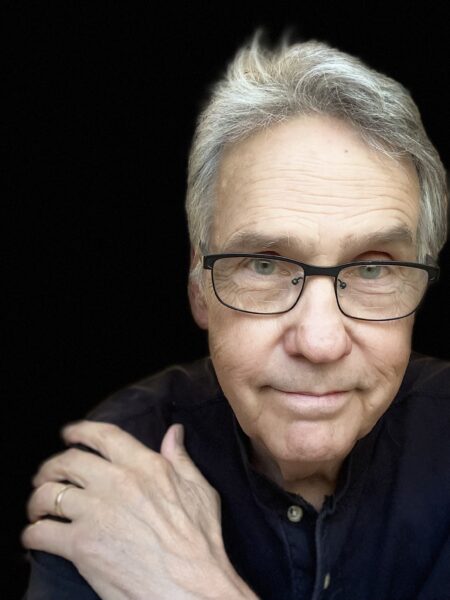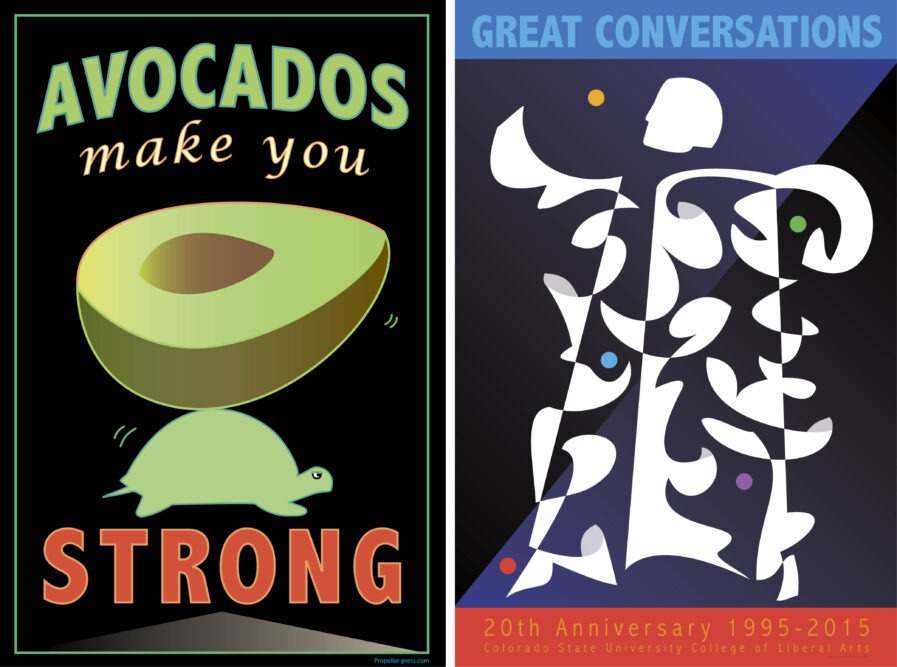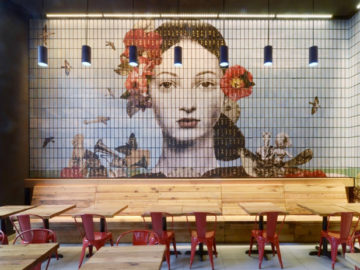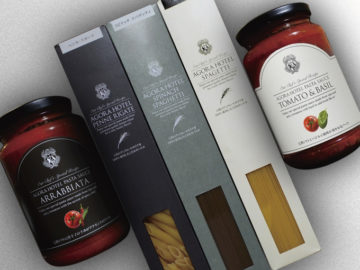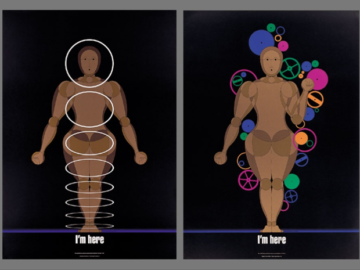John Gravdahl is a master of visual communication whose journey through design and education has been marked by relentless pursuit and deep-seated dedication to his craft. With a portfolio as diverse as the landscapes he enjoys exploring, Gravdahl’s approach to design eschews a fixed style, instead embracing a spirit of discovery that keeps his work perpetually fresh and original. A Graphis Master, his creative footprint spans from the Rocky Mountain market to the global stage, with an emphasis on poster and logo design. His tenure at Colorado State University both honed his creative skills and later allowed him to pass on his passion to the next generation of designers. In this Journal Q&A, Gravdahl delves into his work philosophy and the influences and challenges that have shaped his illustrious career.
Introduction by Denise B. Freestone, Co-founder, OpenStage Theatre
John Gravdahl has provided OpenStage Theatre & Company with pro bono graphic design since 1987. A review of his best creative work includes most of that work, which is often accepted into international juried design exhibitions. John’s poster designs capture the essence of a play with an insightful flair that is uniquely his own. A strong collaborative partner in every endeavor, his world-class creations provide OpenStage Theatre with a visual refinement and imaginative depth that have become a vital part of the company’s image and success over the decades.
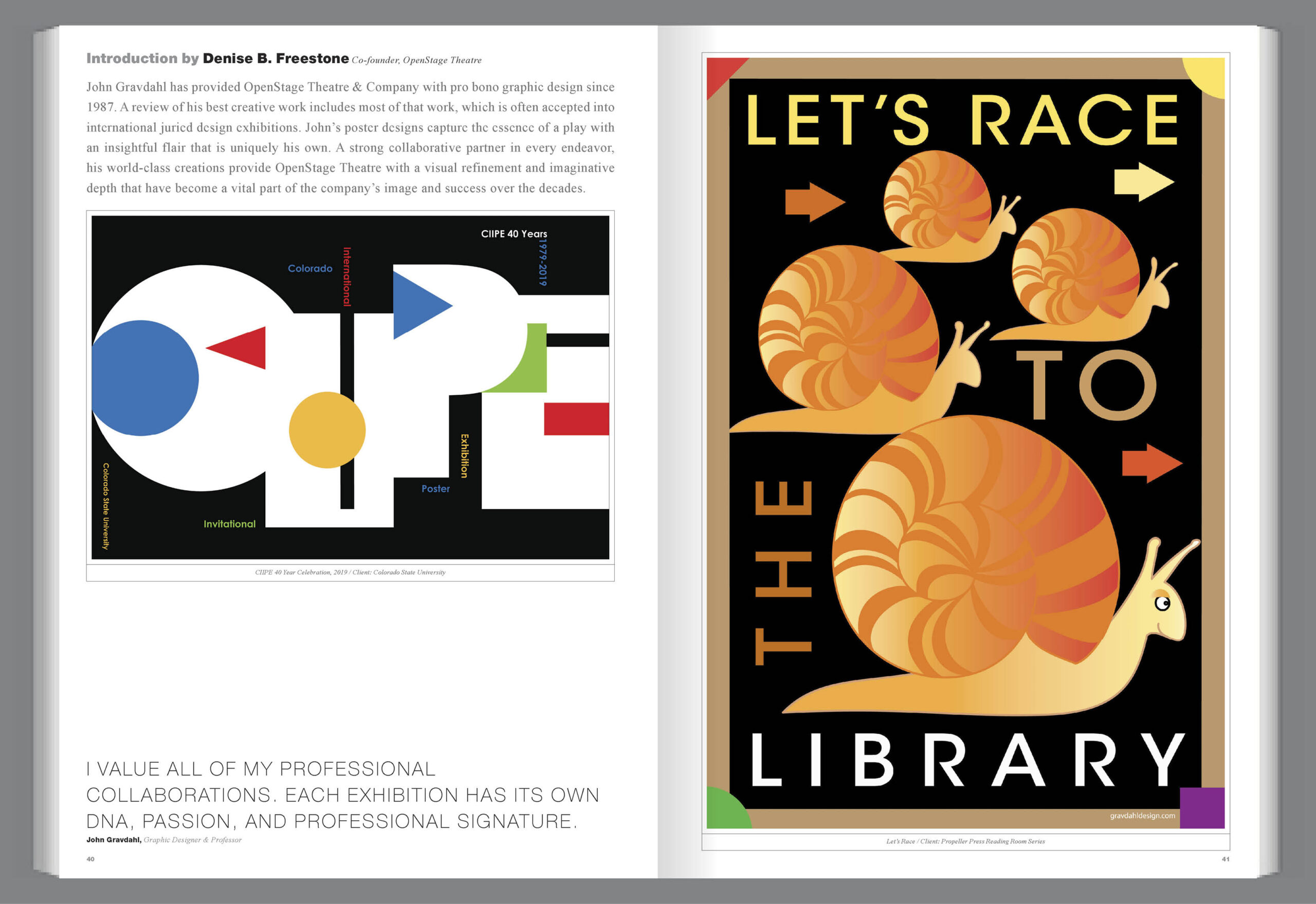
What is your work philosophy?
Listen, take notes, draw, and meet deadlines. For me, good design is a good surprise. I look for the core nature of the challenge. I brainstorm ideas, refine them down to the best basic levels, and search my visual vocabulary for combinations. If that starts to work, I’ll conjure up the imagery. I’m not concerned with style, materials, or pure techniques. My portfolio shows that I have no particular direction in that way; I like to wander around and explore the landscapes around me. It keeps my voice fresh and, I hope, original.
What is it about design that you are most passionate about?
In the broadest terms, design practice is about sharing ideas and making things happen. New design is exciting to witness and teach. I am very encouraged about how the everyday practice of graphic design has grown naturally from challenging business concerns to embracing much more assertive engagements toward social understanding and community growth. I like being included in such efforts.
You primarily do poster and logo design. What drew you to those design fields?
Both fields can benefit from the reduction of complex content into uncomplicated visual forms. I enjoy quietly adding more layers for contemplation. I play around with ambiguity and confusion, too.
Who is or was your greatest mentor?
Phil Risbeck was my professor and a co-director of the biennial Colorado International Invitational Poster Exhibition (CIIPE) when I was a senior design student at Colorado State University. That show, combined with his global accomplishments, dramatically expanded my interest in international visual communication. As eventual teaching colleagues, we became skilled in sharing our teaching ideas and methods.
Who were some of your greatest past influences?
Pat Oliphant was the Pulitzer Prize-winning political cartoonist at the Denver Post when I was growing up in Colorado. I loved his drawings and the way he could rephrase my family’s dinner table discussions of current events with biting visual language. He added insights not available to conversation or writing. I practiced my early drawing skills by copying his work. That was the beginning of my passion for art and design.
As a young professional, I admired Shigeo Fukuda’s visual mischief. His work was immediate yet thoughtful and always a delightful exercise for my eyes. His personal warmth, professional outlook, and his long career of innovation continue to inspire me. I never tire of studying Rockwell Kent’s statuesque expressionism. My first hero of type was Herb Lubalin.
Who among your contemporaries today do you most admire?
Other than all past CIIPE judges and participants: Fra Angelico, Hiroshige, Raymond Loewy, Edward Hopper, Pieter Bruegel, Virginia Francis Sterrett, and, especially, Jose Guadalupe Posada. Some of them are slowing down a bit.
What is the most difficult challenge you’ve had to overcome to reach your current position?
Navigating academic and professional currents through the often divergent values, vocabularies, and vanities. Teaching helped make me a better designer. As a designer and an educator, my challenge is also keeping a balance with fast, professional advances while striving toward artistry and innovation for my students. In the long run, I just consider it all to be a rewarding design practice.
What would be your dream assignment?
I am interested in overlapping scientific and philosophical storytelling. There are so many ways that they can be brought together, and many design goals need that cross-pollination. I appreciate it whenever I see it, and I ponder what’s next. My mural set for our University Research Wall was a wonderful opportunity to step away from my comfort zones.
What are the most important ingredients you require from a client to do successful work?
Communication and mutual respect.
John Gravdahl earned his BFA at Colorado State University in Fort Collins. He worked for design firms in the Rocky Mountain market before establishing a freelance enterprise with a wide-ranging clientele from small family-owned businesses to high-tech corporations and non-profit organizations. He joined the faculty at CSU, becoming co-director of the Colorado International Invitational Poster Exhibition (CIIPE). He received his MFA in illustration at Syracuse University before founding Propeller Press, winning awards for his children’s books and educational posters. With an extensive exhibition record, he has served as a juror, speaker, and workshop leader at major design exhibitions and conferences on four continents.
Social: Instagram, LinkedIn
